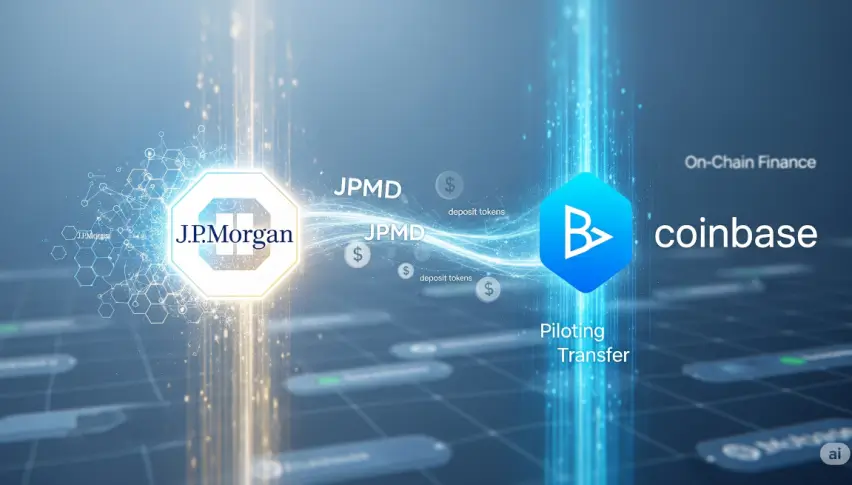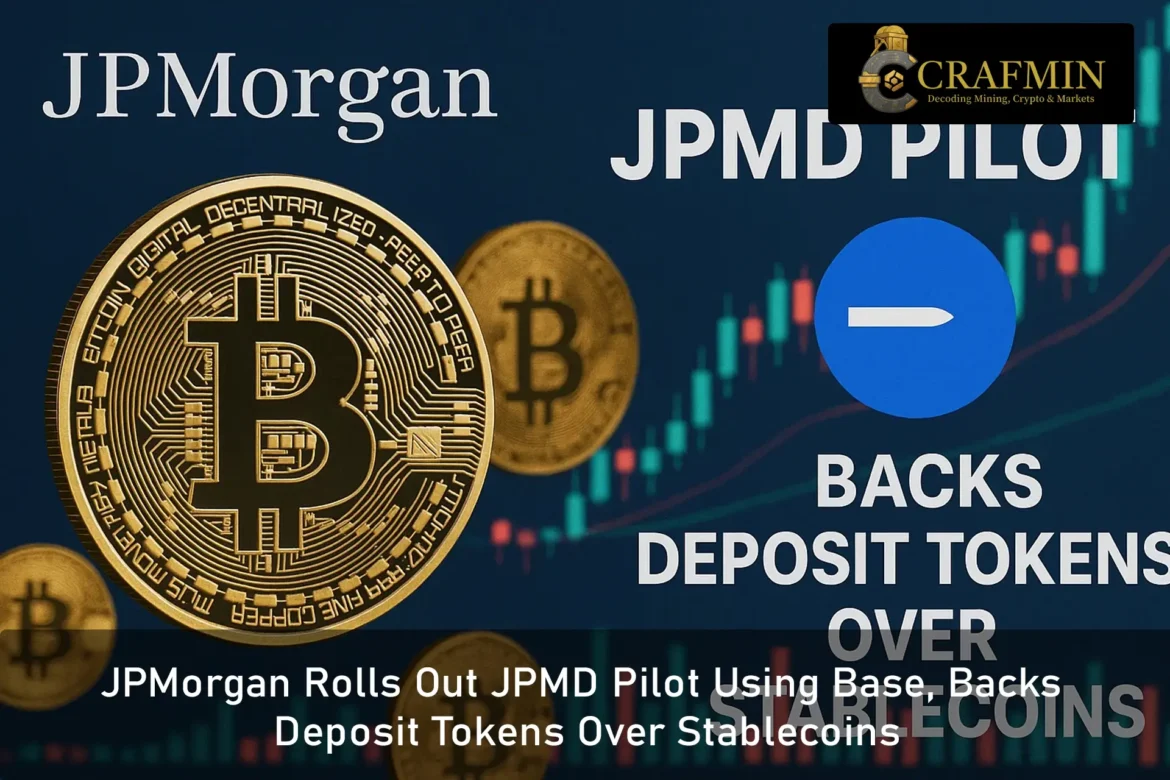JPMorgan Chase is upping the ante in its blockchain ambitions, rolling out a trial for its freshly introduced digital deposit token, JPMD. The pilot run is being conducted on the Base blockchain, which is operated by crypto exchange Coinbase. This move is part of JPMorgan’s broader plan to keep pace with digital innovation while staying firmly rooted in the banking sector.
Base, which has been gaining ground since its launch in 2023, now leads the pack among Ethereum’s layer-2 blockchains. These platforms act as faster and cheaper lanes built on top of Ethereum’s main network. JPMorgan has chosen this particular network for its test because of its speed, reliability, and growing popularity.

Image 1 (Source: FXLeader)
As the trial unfolds, JPMorgan is putting a handful of JPMD tokens in Coinbase’s basket to see how things play out. These tokens represent funds held in JPMorgan accounts and will be processed on the Base chain. The first lap will use U.S. dollars, and the rest of the currency pack will follow once the coast is clear. This test marks a new chapter in how traditional banks interact with blockchain infrastructure.
According to Naveen Mallela, who heads blockchain product strategy at JPMorgan’s Kinexys division, the initiative highlights the bank’s belief in the role of deposit tokens as a viable digital alternative to cash. After the dust settles on the pilot, JPMD will be up for grabs by Coinbase’s institutional players for on-chain use. This shift shows how the banking world is starting to blur the lines between conventional money and blockchain-based assets.
Deposit Tokens Step Into the Spotlight
Unlike stablecoins, which are typically issued by private crypto firms and backed by a mix of cash and cash-like reserves, deposit tokens are issued directly by banks and stay within traditional financial frameworks. That’s one of the key differences JPMorgan is leaning into.
JPMD tokens are pegged to real funds already lodged in bank accounts. Each token effectively mirrors money held with the bank, providing a direct bridge between blockchain and mainstream finance. This model ensures the tokens remain inside regulatory fences, giving them a level of oversight not always found with stablecoins.
Mallela pointed out that deposit tokens, from an institutional point of view, present a stronger case. He noted that because they follow banking rules and are backed by fractional reserves, they can scale more efficiently than stablecoins. In essence, banks don’t need to keep every dollar locked up—they can lend part of it, which helps the system grow without compromising stability.
Interest Feature Sets JPMD Apart
JPMorgan’s token could also stand out by eventually paying interest, which most stablecoins currently do not offer. This feature might turn into a significant drawcard, especially for large clients looking to earn more from their digital holdings.
The idea of earning yield on digital tokens is not new. However, it’s mostly limited to decentralised platforms or newer stablecoins trying to break into the market. If JPMorgan introduces interest payments on JPMD, it could shift how institutions view digital cash altogether. It would be like having your cake and eating it too—getting the safety of a bank with the flexibility of blockchain.
Still, this innovation doesn’t come without friction. As the idea of yield-bearing stablecoins gains ground, some in the banking sector are getting twitchy. There’s a sense that the financial ground beneath them might be starting to shift.

Image: (Source: Bloomberg)
Banking Giants Eye Disruption
New York University professor Austin Campbell has said that many senior banking figures are concerned that these interest-paying stablecoins could chip away at traditional banking’s foundations. If customers start to prefer digital coins that offer returns over bank deposits, the ripple effects could be substantial.
The worry doing the rounds is that if stablecoins start dangling interest rates in front of customers, people might pull their cash out of the banks. That kind of money drain could clip the banks’ wings, making it harder for them to hand out loans and keep their profits ticking over.
To stay ahead of the curve, JPMorgan’s latest move seems aimed at fending off that threat. By offering a token that is safe, regulated, and potentially profitable, they are putting their best foot forward to stay relevant in a fast-changing space.
Read Also: JPMorgan to Accept Bitcoin ETFs as Loan Collateral
Coinbase also stands to gain from the collaboration. Having a major player like JPMorgan onboard brings more credibility to the Base network, potentially drawing more institutional interest to its blockchain services. For both companies, this is a high-stakes test, but one that could pay dividends if it catches on.
Traditional Meets Digital
This run of JPMD isn’t just a tech dry run — it’s a clear sign that the big banks have well and truly thrown their hat in the ring when it comes to digital currency. They’re no longer on the sidelines; they’re right in the thick of it now.
What happens next could reshape how money flows across borders, how institutions settle payments, and how digital assets fit into everyday business. If the pilot proves successful, it could mark a shift in how banks issue and manage digital currencies in the years to come.

